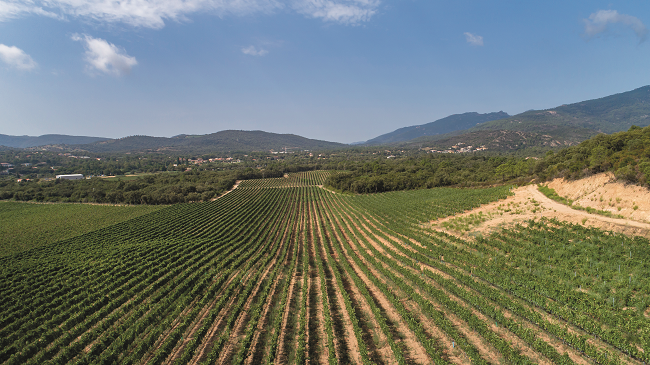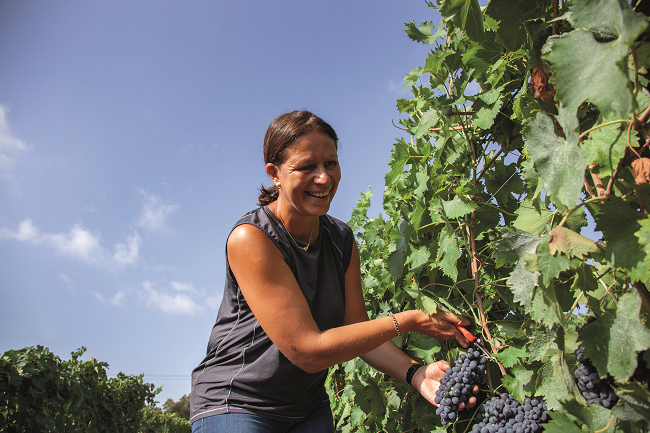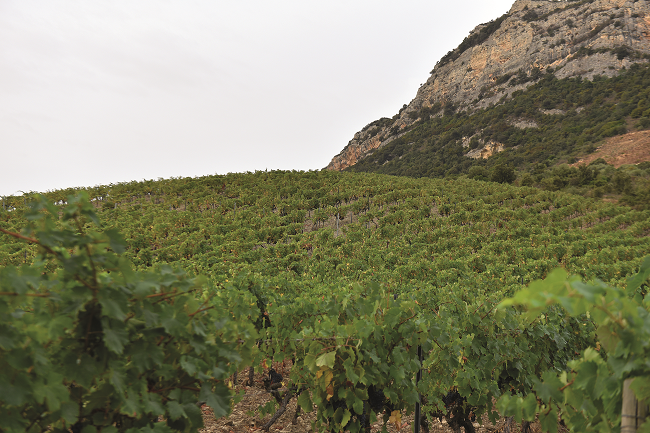Taste of France: the New Wave of Corsican Wines

On France’s Isle of Beauty, Dominic Rippon tastes the new wave of Corsican wines.
Corsica was conquered by the French army in 1769, the same year as its most famous son, Napoleon Bonaparte, was born there. The territory is nearer to Italy than it is to France, and the Corsican language is closer to Italian than it is to French – a fact reflected in its place names, as well as its wine appellations.
Although Corsica’s vineyards are mostly planted with native Italian vine varieties, the wines it makes today are unmistakeably the products of modern French viticulture, crafted by a new generation of vignerons, who have mostly learned their craft in mainland France.
Once upon a time, Corsican wine was heady stuff, ripened to rusticity under the sweltering Mediterranean sun. Most of what wasn’t exported in bulk was bottled under Corsica’s evocatively named IGP (previously vin de pays) Île de Beauté, and quaffed by the island’s thirsty tourists.
In the last two decades, however, Corsica’s wine industry has developed fast. Rugged landscapes and a wide variety of terroirs make wines that are vinified with new care. And while IGPs still outnumber appellation-controlled wines by 2:1, mostly producing berry-scented rosés, Corsica’s wine appellations are in the ascendant.

©Sylvain Alessandri43
Around a third of Corsica’s vineyards are planted with the Nielluccio grape, known as Sangiovese in Italy, where it is responsible for Tuscan classics such as Chianti and Brunello di Montalcino. In Corsica, it makes sturdy, long-lived reds in Patrimonio, the island’s oldest appellation. These vineyards, in the north, also make fresh dry whites from the Vermentino grape: the main ingredient in all of Corsica’s appellation-controlled whites.
Less common is the Sciaccarello grape, known as Mammolo in Tuscany, which makes more delicate reds and rosés in the western appellations of Calvi, Ajaccio and Sartène, although it is frequently blended with the fuller-bodied Niellucio.
Muscat and Vermentino make excellent sweet whites in Cap Corse, the island’s northernmost spur; while the ancient vineyards of Porto-Vecchio and Figari in the south produce exotically perfumed dry whites and robust reds from a blend of local and southern French varieties such as Grenache.
Corsica’s wines have traditionally been enjoyed on the island and the mainland, but they are increasingly finding new fans abroad, and as exports boom (up by 21% in 2018 alone!), it is easier to find these excellent bottles beyond France’s shores.

©Sylvain Alessandri43
Dominic’s Choice
Domaine de Granajolo
www.granajolo.fr
Corse Porto-Vecchio Rosé Cuvée Monika’ 2022
Domaine Pero Longo
domaine-pero-longo.amenitiz.io
Corse Sartène Blanc ‘Sérénité’ 2022
Domaine Orenga de Gaffory
www.orengadegaffory.com
Patrimonio Rouge ‘Cuvée des Gouverneurs’ 2019
From France Today magazine
Lead photo credit : ©Sylvain Alessandri2
Share to: Facebook Twitter LinkedIn Email
More in corsica, French wine, vineyards
Leave a reply
Your email address will not be published. Required fields are marked *



